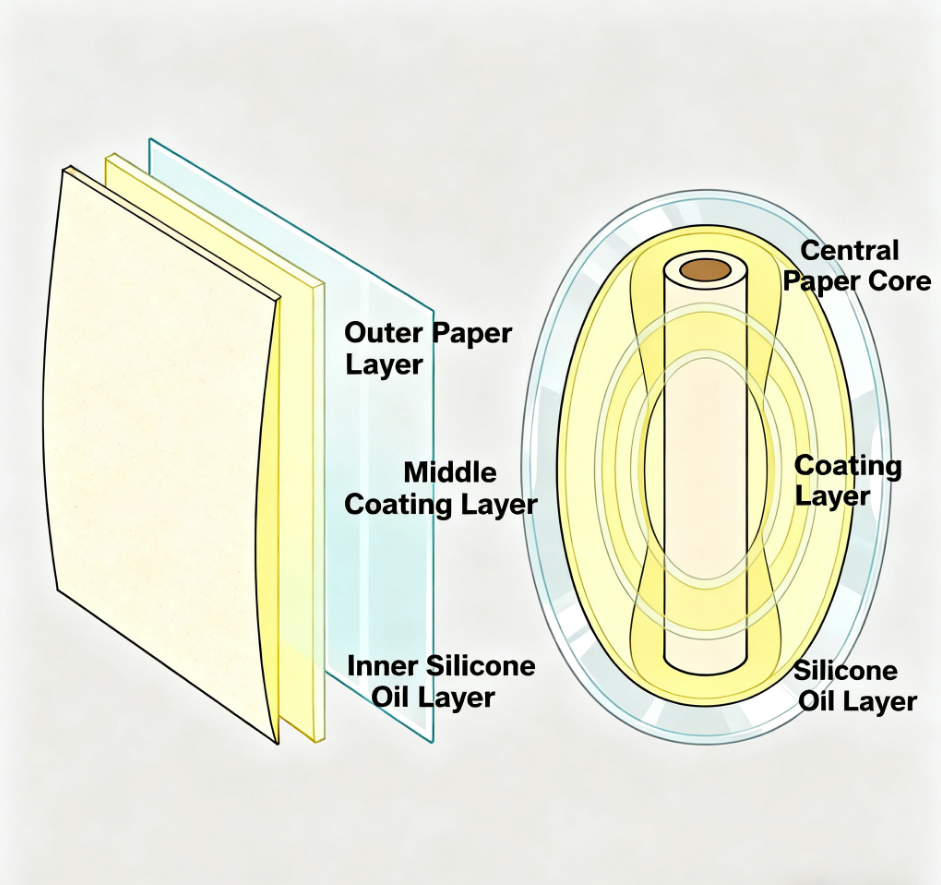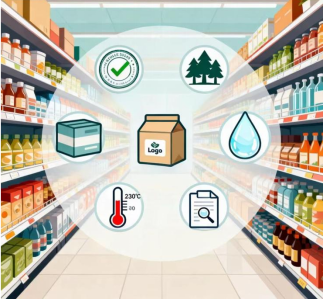As a common companion for baking, parchment paper saves the trouble of washing dishes, and its safety and selection methods have attracted much attention. Below are professional answers:
I. Structure of Parchment Paper
Parchment paper is a food-contact paper made of virgin pulp, a coating layer and a food-grade silicone oil layer. It has two types: single-sided and double-sided:
Single-sided parchment paper: The outer layer is the paper layer, the middle is the coating layer, and the inner layer (the side in contact with food) is the silicone oil layer.
Double-sided parchment paper: The center is the paper core, with the coating layer and silicone oil layer in sequence on both sides.

II. Safety Requirements for Materials of Each Layer
Paper Layer
China: Must comply with GB4806.8-2022. Only virgin pulp (including wood pulp) is allowed; recycled pulp is prohibited.
EU: New wood fibers or recycled fibers can be used. For recycled fibers, measures such as cleaning and adding barriers must be taken to control impurity migration, and they must also meet restrictions on migration levels, fluorescent substances, microorganisms, etc.
USA: In accordance with 21 CFR Part 176, the paper layer must pass tests for extractables and heavy metals (e.g., lead, cadmium). Fluorescent brighteners are restricted, and PFAS-containing oil repellents will be banned starting from 2025.
Silicone Oil Layer
Food-grade silicone oil must be used, such as polydimethylsiloxane. Some products previously used Quilon (Quilon C9). All materials must meet food safety standards, with a heat resistance of 230-250℃, making them suitable for the high-temperature environment of air fryers.
Coating Layer
Its core functions are to bond the silicone oil layer to the paper layer and prevent silicone oil penetration. The main risk lies in the adhesive:
China: According to GB4806.15-2024, adhesives are divided into two categories: those in direct contact with food and those in indirect contact. Adhesives for direct contact must use raw materials listed in Appendix A and official announcements.
EU: Follows regulations 1935/2004, 2023/2006, and 10/2011. Since December 2024, adhesives containing bisphenol A (and other harmful bisphenol analogs) have been banned.
USA: In accordance with 21 CFR Part 175, general adhesives are regulated under 175.105, and pressure-sensitive adhesives under 175.125. Both must comply with the list of allowed substances and dosage limits.
III. Key Points for Choosing Parchment Paper
Check certification standards: Ensure the product meets the standards of the region where it will be used (e.g., China's GB4806.8-2022, EU's 1935/2004, USA's FDA 21 CFR Part 176).
Verify material safety: Choose virgin pulp for the paper layer, food-grade materials for the silicone oil layer, and adhesives that meet the food contact standards of the corresponding country/region. Avoid industrial-grade materials.
Examine product labels: The packaging must be marked with the brand name, manufacturer, factory address, and production license. Use caution when choosing products with incomplete information.

Pay attention to high-temperature resistance: Prioritize products labeled with a maximum temperature resistance (recommended around 230℃) and service duration (mostly ≤220℃, ≤20-30 minutes) to prevent the release of harmful substances or fire under high temperatures.
Request test reports: Give preference to products that can provide third-party test reports, with a focus on the test results of adhesive components and the migration of harmful substances.

 English
English
 Español
Español
 Português
Português
 русский
русский
 français
français
 日本語
日本語
 Deutsch
Deutsch
 Italiano
Italiano
 Nederlands
Nederlands
 ไทย
ไทย
 Polski
Polski
 한국어
한국어
 Svenska
Svenska
 magyar
magyar
 Malay
Malay
 Dansk
Dansk
 Suomi
Suomi
 Pilipino
Pilipino
 Gaeilge
Gaeilge
 عربى
عربى
 norsk
norsk
 čeština
čeština
 Ελληνικά
Ελληνικά
 فارسی
فارسی
 Azərbaycan
Azərbaycan
 slovenský
slovenský
 Lietuvos
Lietuvos
 Română
Română
 मराठी
मराठी
 Српски
Српски
 Afrikaans
Afrikaans
 עִברִית
עִברִית
 Cymraeg
Cymraeg
 Latvietis
Latvietis
 icelandic
icelandic
 Беларус
Беларус
 Hrvatski
Hrvatski
 Kreyòl ayisyen
Kreyòl ayisyen
 Malti
Malti
 Bosanski
Bosanski
 ગુજરાતી
ગુજરાતી
 Монгол хэл
Монгол хэл
 Hmong
Hmong
 Zulu
Zulu
 Gàidhlig
Gàidhlig
 Somali
Somali
 O'zbek
O'zbek
 Hawaiian
Hawaiian
 Lëtzebuergesch
Lëtzebuergesch
 Luganda
Luganda










